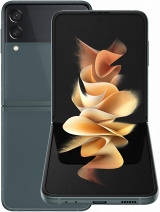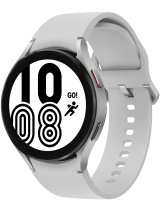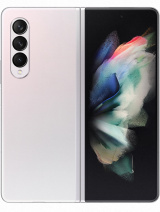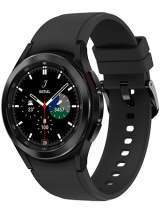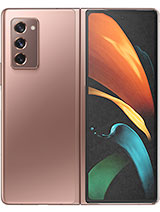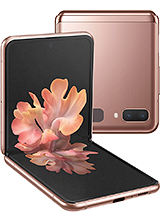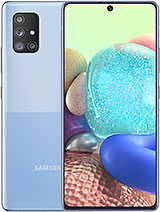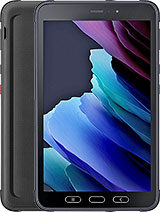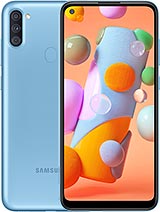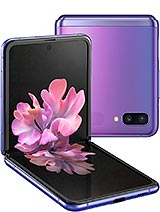Samsung Galaxy Z Flip Durability Test – Fake Folding Glass?! By JerryRigEverything
Samsung just released a new folding phone with a bold claim that it has revolutionary flexible glass. Like it says here on their website. We'll be putting that to the test today. This is the Samsung's Z Flip, or the Flipz depending on how you open the box. It does come with a case, one for each half of the phone. Kind of nice.
Samsung says this is a statement smartphone for people who want to stand out. A phone that demands attention. And I'd have to agree. The ability to fold your phone in half is genuinely crazy... and by crazy I mean crazy awesome.
We can now have a full sized phone in a compact design that takes up half the space. The future is amazing. It's time for a durability test. Let's go. I mean, let's get started.
Starting off, pay very close attention to this first warning and remember it. It says avoid pressing hard on the screen or the front camera lens. Tap the screen lightly to keep it safe. Samsung said at their launch event that they've done the impossible and created ultra thin glass that folds. This glass can be folded over 200,000 times.
Samsung said that when you fold it, you're not just bending glass, you're bending the laws of physics. But that warning included on the phone isn't as confidence inducing as Samsung's launch event attempted to be. It does feel nice though. This type of fold is definitely my favorite so far. I like having a phone that folds instead of having a tablet that folds.
There are two things I noticed right off the bat with the Z Flip. One, is the crease here still along the center. Not a big deal. There's also a small divot in the display above the front facing camera lens. You can see the curve of my lights along with the bend of the surface of that display.
The Samsung logo along the spine gets entirely covered up when the phone is open. This new hinge design apparently has thin brushes inside to keep out dust. We'll test that later. There's also no screen lifting off the frame like we saw in the Motorola Razor, which probably makes this design much safer and more long-term. There is a bit of a gap between the two halves of the phone when it's closed.
Also fine. And it makes sense because if the screen really is glass, we can't have glass clacking against glass every time the phone gets closed. That just wouldn't end well. Speaking of things not ending well, it's time to see if this material really is glass or not. I've been doing this same durability test on every major new smartphone since the Galaxy S6 came out 5 years ago.
It is an expensive hobby, yes, but I think it's fairly useful in finding out what your phone is made from, and how well it will handle every day life. Plastic, as we know, scratches at a level 2 or 3. Real glass would scratch at a 5 or 6. And sapphire would scratch at an 8 or 9, right under diamonds which are level 10. As my first Mohs pick touches the display of the Galaxy Z Flip, we can see marks start to appear.
This is rather unfortunate. Continuing onward, we can see deeper grooves happening at a level 3. This is exactly how a plastic screen would react. Exactly like we saw in the Galaxy Fold, the Motorola Razr, and basically every other plastic screen smartphone ever made. For kicks and giggles we can bump it up to a level 4, and I could physically feel the the tip of the pick start to cut the display surface open.
So why in the world would Samsung talk about flexible glass so much on their website and at the launch event? It could be that they're using a hybrid plastic polymer with little specks of glass ingredients inside, and then just, you know, calling it glass. But that doesn't really seem like a very nice thing to be doing. If a company says “glass”, their customers will think of a hard clear material that has excellent scratch resistance. From a durability perspective, that scratch resistance is the primary reason that glass is used on basically every smartphone display. Samsung is calling this “glass” but this display clearly doesn't have the scratch resistance or structural benefits that customers are expecting from glass.
If glass isn't glass, then truth doesn't matter. And truth should matter. This isn't American politics. Samsung is currently the number one smartphone manufacturer in the world, and we shouldn't be calling this screen glass when clearly my fingernail is leaving marks on the surface, over and over. I'm not sure what Samsung's thinking over there, but we clearly have scratches at levels 2, 3, 4, and fingernail.
I don't know what material this is, but Samsung definitely shouldn't be calling it glass, and I'm disappointed. Even if I jump up here to the front facing 10 megapixel selfie camera, the surface is covered in that same so-called glass material and can still be scratched with my fingernail. I'll come back to this again in just a second. The raised screen bump around the edge of the screen is made from plastic. This is the same thing we saw in the Galaxy Fold.
This guy kind of holds the screen in place and keeps people from peeling off the top layer. The volume rocker is made from metal. The recessed power button over here on the side is scratchable. I'll set my fingerprint and see if it still works. Don't mind my thumb by the way, I smashed it with a TV a few weeks ago.
Now the phone is still able to be unlocked even though the fingerprint scanner is damaged. But to test it some more, I added some more scratches. And after the additional scratches are in place, my fingerprints stopped working. Interesting. The frame of the Galaxy Z Flip is made from metal.
And down here along the bottom you have more metal alongside the singular loudspeaker, the USB-C port and, you know, the no headphone jack. The whole frame of the phone seems to be made from metal, which is a good thing and will hopefully keep the phone together during the bend test later. There are a few plastic antenna lines and a removable SIM card tray. But no expandable memory. The center hinge mechanism is made from metal with that Samsung logo recessed into the spine.
Each of the tiny letters is made from a piece of shiny foil that is glued inside the cavity. These will probably never fall out on their own, but it's interesting to see what the Z Flip is made from. The rear panels are made from glass - both the top and the bottom sections. This mirror purple is kind of growing on me. It gradually switches between purple and blue depending on how the light is shining on it.
There are 2 cameras on the back – a 12 megapixel ultra wide angle camera, and a 12 megapixel normal camera. Both are covered in real scratch resistant glass. I think the fingerprints are getting a bit out of hand though. Thanks to our channel sponsor dbrand for hooking me up with the limited edition Robot Camo. Each of these fingerprint fighting skins are totally unique.
No two phones will be the same, and the individual drawings are super intricate and are currently available for every phone that dbrand covers – not just the Galaxy Z Flip. I got one added to the back of the grip case for my Note 10 Plus. Since the grip case has the cut out for skins and can be swapped out whenever. Kind of fun. I'll leave a link down in the description if you want to pick up some Robot Camo or a case for your own phone.
One cool thing about the folds is that it has the world's tiniest viewfinder for selfie talking. I can double click the power button and it lets me see myself and take a cute little pic. Thumbs up for that. We'll perform the world's smallest scratch test on it. And moving up through Mohs scale of hardness, we can see that picks 1-5 don't leave any marks like we would expect.
We only see scratches starting at a level 6 with deeper grooves at a level 7, which is the scratch resistance we expect from anything with the word “glass” in the name. Anything that scratches earlier should not be called “glass. ” Even if the Z Flip display does hypothetically have glass ingredients in it, we shouldn't be calling it “glass” unless it has the properties of glass. I can't go make a pile of mud, sprinkle in some chocolate chips and then call my mud a cookie just because it has some of the ingredients of a cookie. That shouldn't be allowed.
The thin display lasted about 15 seconds under the heat from my lighter. When I pulled the flame away there were burn marks still left on the screen and it did not recover. One really interesting thing though, if you watch again, is that you can physically see the screen change shape as the heat from my lighter heats it up. Plastic of course is affected by the temperature of my lighter. Glass, however, would not be physically affected in the same way.
As the surface cools down, the shape of the screen returns to normal. Let's start with the slam shut test. You know, if you get a little aggressive with hanging up on someone after a phone call and you smash the phone closed. We got to see if the phone survives. It does have the physical raised bumpers all along the outer edge of the screen.
Those bumpers are absorbing most of the slamming force and the screen is still in one piece. Of course the phone is meant to fold inwards. Samsung said it would survive 200,000 times, which is 182 times a day if you plan on keeping your phone for 3 years. Bending back the opposite direction though is a different story. With the first flex we get a small separation of the frame near the antenna line, and the top half bumper started coming loose.
But the screen of the Z Flip is still entirely intact and in one piece. It still shuts and opens with no grinding of the hinge. We'll try it again. You can see the back panels of the phone meet in the center, providing more support to keep the phone from bending backwards. And the phone hinge does a really good job of keeping the phone shape for the most part.
Only on our 3rd bend did we finally hear a snap from the frame near that power button. And even then, the so called glass screen of the Z Flip is still intact. Folding screens are pretty resilient. Even though the phone doesn't really shut quite right anymore, it's physically withstanding quite a bit more abuse than I initially thought it could. Only now, after all its previous bends and cracks does the back panel shatter.
It's only a cosmetic wound since the display is still working just fine, and this is good to know. All the important things are still functional. You might be asking, 'Hey Jerry, what if there is a super thin nano layer of glass on the top of the display?' If that were true, we would start to see fractures and cracks from that nano layer. But instead we only see the tip of my Mohs picks cutting into the plastic, like we would see with any piece of plastic that gets cut. This screen is in no way scratch resistant whatsoever.
And if poked hard enough, the pixels will still get damaged. It does survive my bend test however. Everything is still functional. This is certainly the most durable folding phone we've seen yet. Samsung did say that they designed this new hinge with little tiny fibers inside, or little brushes, to keep out dust and dirt from the folding bits.
It'll be awesome to see what this looks like from the inside during the teardown. So make sure you're subscribed for that. After pouring my rocks on the screen and making sure they cover the entire phone, just like it would if you dropped it when you accidentally go outside. Initially I could hear a few little complaints of the dust inside the hinge. But after blowing all the dust off, those complaints mostly went away.
This new hinge design might actually be the start to something really good. But the real danger of calling something glass means that people will think they have the protection of glass when that clearly is not the case. Glass distributes pressure along the whole phone. While this plastic allows that pressure to get in and damage pixels, you can see that each pressure point from my pick kills the line of pixels directly above it. This would not happen if the screen were glass.
And it's dangerous to let people walk around with that false sense of security, like Samsung gives them when they call it glass. And that's not all. Each of these puncture wounds does let air get inside the sealed OLED layers, which kills even more pixels. A puncture or cut in the plastic screen is a cancer that will eventually spread across the whole display. Yeah, I sound a bit apocalyptic, but it's important to know what your phone is capable of and what might damage it.
So remember, the Samsung Z Flip does not have a true glass screen and it's still very fragile. That being said, it's also still pretty awesome. Samsung should just correct their verbiage. Let me know what you think of Samsung's verbiage down in the comments. If you enjoyed this durability test, come check out my last video.
We modeled a normal wheelchair to go on a safari in Africa. It turned out pretty cool. Come hang out with me on Instagram and Twitter. And thanks a ton for watching. I'll see you around.
Source : JerryRigEverything

